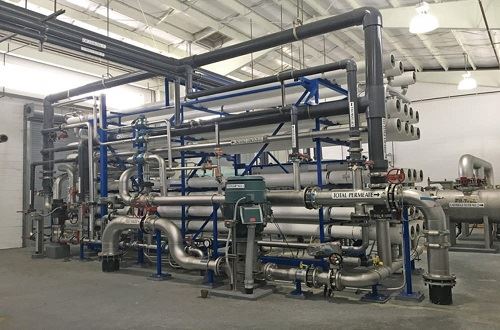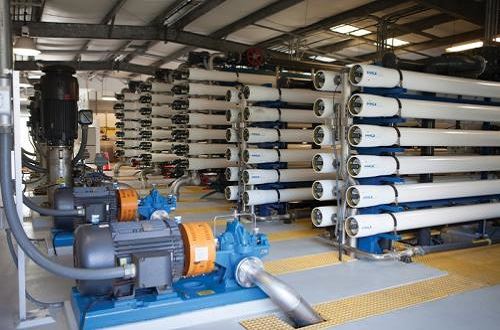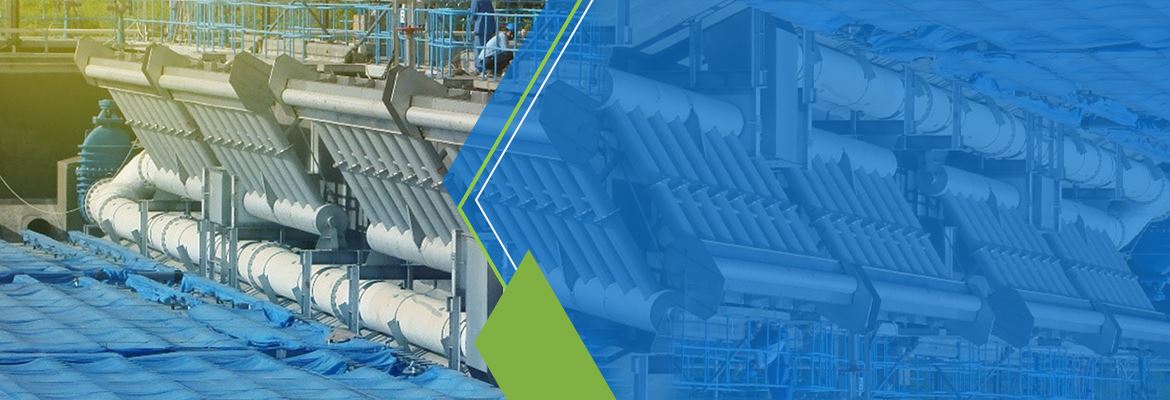What is Nanofiltration ?
Nanofiltration is the most recently developed pressure-driven membrane process for liquid-phase separations.Nanofiltration has replaced reverse osmosis (RO) in many applications due to lower energy consumption and higher flux rates. The purpose of Nanofiltration process is removal of organic matters (both natural as well as synthetic) which are responsible for producing disinfection co-products.




Working Principle of Nanofiltration Membrane
The features of Nanofiltration membranes lie between those of non-porous RO membranes and porous ultrafiltration (UF) membranes. Commercial Nanofiltration membranes possess a fixed charge developed by dissociation of surface groups such as sulphurated or carboxyl acids. The properties of Nanofiltrationmembranes, therefore, allow ions to be separated by a combination of the size and electrical effects of UF and the ion interaction mechanisms of RO. The Nanofiltration membrane is the relatively newly introduced technology in wastewater treatment system. The size of pores in Nanofiltration membranes is such that even small uncharged solutes are highly rejected while the surface electrostatic properties allow monovalent ions to be reasonably well transmitted while mostly retaining the multivalent ions. These characteristics make Nanofiltration membranes extremely useful in the fractionation and selective removal of solutes from complex process streams.
Advantages of Nanofiltration
-
Lower discharge volumes, lower retained concentrations than RO for low value salts.
-
Reduced salt content and dissolved solid content (TDS) in brackish water
-
Reduction in heavy metals.
-
Reduced nitrates and sulphates.
-
Reduction in colour, tannins and turbidity.
-
Softens hard water with the use of specific softening membranes.
-
Chemical-free, i,e. needs no salt or chemicals during operation.
-
pH of water after nanofiltration is normally non-aggressive.
-
Disinfection.
Disadvantages of Nanofiltration
-
Higher energy consumption than Ultrafiltration and Microfiltration (0.3 to 1 kWh/m³).
-
Pre-treatment is needed for some heavily polluted waters (pre-filtration 0.1 - 20 microns). This is always the case with spiral-wound membranes.
-
Limited retention for salts and univalent ions.
-
Nanofiltration membranes are a little more expensive than reverse osmosis membranes.
-
Membranes are sensitive to free chlorine (life-span of 1000 ppmh). An active carbon filter or a bi-sulphite treatment is recommended for high chlorine concentrations.
Application
-
Well known uses of Nanofiltration include water softening and the removal of pesticides from wastewater.
-
Nano-filtration membranes can primarily be used to remove multivalent ions and smaller organic molecules from water.
Nanofiltration or reverse osmosis?
Reverse osmosis filtration method covers the widest field of application as it is used for demineralization of water. While Nanofiltration is used to reduce unwanted components in full or in part. Unlike reverse osmosis, nanofiltration applies a lower pressure, typically under seven bar, resulting in lower energy consumption compared with a reverse osmosis plant with the same productivity.
You must also choose a nanofiltration plant over a reverse osmosis plant if you want a certain hardness, because a potential demineralization will make the water aggressive and lead to problems with corrosion in the supply network.
Designed for your needs
Atkins Enviro Water Technologies offers a broad product range of fully automatic nanofiltration units – based on our well-known modular standard system, which makes it possible for us to combine an optimal plant for your needs.





 Web Mail : Info@atkinsindia.com
Web Mail : Info@atkinsindia.com Customer Care Number : +91 9992227788
Customer Care Number : +91 9992227788 Web Link : www.atkinsindia.com
Web Link : www.atkinsindia.com









